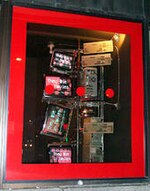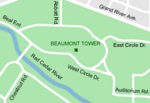Masonic Temple Building (East Lansing, Michigan)
Buildings and structures in Ingham County, MichiganClubhouses on the National Register of Historic Places in MichiganFormer Masonic buildings in MichiganMasonic buildings completed in 1916Michigan Registered Historic Place stubs ... and 4 more
Michigan State Historic Sites in Ingham CountyNational Register of Historic Places in Ingham County, MichiganNeoclassical architecture in MichiganUse mdy dates from August 2023

The Masonic Temple Building, located at 314 M.A.C. Avenue in East Lansing, Michigan, is a building constructed in 1916 for the Freemasons. It was listed on the National Register of Historic Places in 1999.
Excerpt from the Wikipedia article Masonic Temple Building (East Lansing, Michigan) (License: CC BY-SA 3.0, Authors, Images).Masonic Temple Building (East Lansing, Michigan)
M.A.C. Avenue, East Lansing
Geographical coordinates (GPS) Address Nearby Places Show on map
Geographical coordinates (GPS)
| Latitude | Longitude |
|---|---|
| N 42.736111111111 ° | E -84.480277777778 ° |
Address
M.A.C. Avenue
48823 East Lansing
Michigan, United States
Open on Google Maps








